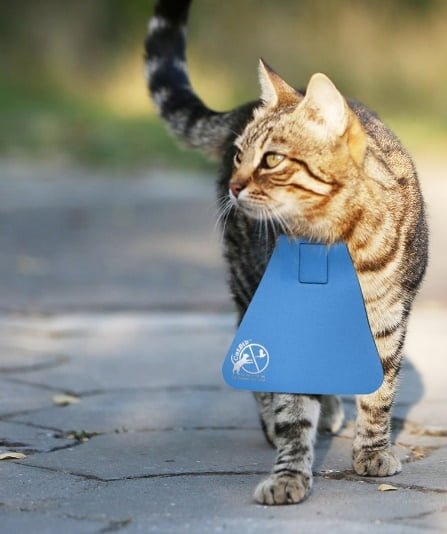We must act immediately to control all cats
By Neil Fraser, Tomaree Birdwatchers and Ewa Meyer, EcoNetwork.
Annually, cats kill 609 million reptiles, 399 million birds and 1,067 million mammals. That is over 2 billion native animals each year yet it barely warrants a mention unlike the bushfire figure of 3 billion wildlife deaths following the 2019-2020 black summer fires.
The above figures are the findings of a 2022 research paper authored by Dr. Alyson Stobo-Wilson (CSIRO, Division of Land and Water)1 and a group of expert researchers. They examined thousands of samples of cat scat to identify their prey, and estimated cat densities across all area of the country. The 2 billion estimate does not include invertebrates such as insects and worms, also killed by cats, as their remains cannot be identified in cat scats.
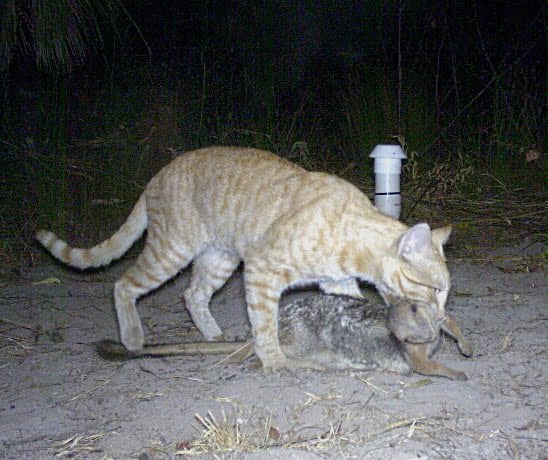
Feral cat, Kakadu NP with Wilkin’s rock-wallaby. Image (c) NT Government.
Feral cats are the greatest threat to many Australian wildlife species. They have been implicated in at least 27 mammal extinctions and currently threaten more than 100 Australian species, including mammals, lizards and ground nesting birds. They also transmit diseases to pet cats, wildlife and humans, where the annual health costs of cat-borne diseases are estimated at over $8 billion a year.
There are estimated to be 2.8 million feral cats and 3.8 million domestic cats in Australia. Feral cats are present in all habitats over almost the entire continent. They have an average density of one cat per 4 km2, but along the east coast and around major urban centres, the average density can be 9-14 cats per km2. The average weight of adult males is 4.5kg and adult females average 3.2kg. They can take mammals up to 5.5 kg – the size of a small wallaby.
After decades of research and evidence, what is being done to address this most urgent threat to biodiversity by governments and by cat owners?
Federal legislation
Feral cats are recognised as a Key Threatening Process under the Environment Protection and Biodiversity Conservation Act 1999 and a Feral Cat Threat Abatement Plan (2015) has been endorsed to address the threat.
In 2020, the Australian Parliament conducted an inquiry into the problem of feral and domestic cats. The first recommendation of the report, tabled in 2021 was ‘that the Australian Government recognise and prioritise the problem of feral cats in Australia consistent with its status as a matter of national environmental significance, that must be addressed effectively to ensure the continued survival of Australia’s native wildlife and ecological communities.’ It was clear from the enquiry that the current control measures are inadequate. It was also recommended that a clear strategy be developed to manage unowned, semi-owned as well as owned pet cats.
NSW State legislation

Laws relating to domestic cats in NSW are prescribed in the NSW Companion Animals Act 1998. The protection of native birds and animals from domestic cats is covered by the Act which tasks local councils with promoting and implementing the requirements some of which are:
- an annual permit is required for a cat that is not desexed.
- all cats over 6 months old, or being sold, must have a microchip installed by licenced practitioner and must be registered with the local council.
- cats are prohibited in wildlife protection areas.
- a council officer may issue a notice to the owner of the nuisance cat requiring the owner to prevent the nuisance behaviour, such as causing damage on your property or creating a disturbance.
- any person may lawfully seize a cat if that action is reasonable and necessary for the protection of any person or animal (other than vermin) from injury or death. For example, if a neighbour’s cat is catching birds in your garden, you can catch it and report it to council’s rangers.
In NSW, the Act allows cats to roam free and it is difficult to enforce requirements as council officers have no powers to apprehend a cat to determine if it is compliant. Some local councils mandate a curfew and in the ACT, broadscale cat containment became mandatory in 2022.
Feral cats are listed as a Key Threatening Process under the NSW Biodiversity Conservation Act 2016 and their management in NSW National Parks is the responsibility of NPWS. Feral cats pose a risk to many threatened species and protection is provided through prioritising regional pest management strategies and the threat abatement plan for the species, under the Saving our Species program.
National Parks, Local Land Services, Council … who does what and where?
Yes it can be confusing! There are multiple government agencies responsible for domestic and feral cat control – National Parks and Wildlife Service (NPWS), Local Land Services (Hunter LLS), as well as local councils. It appears to be a diverse and often uncoordinated approach to what is already a very difficult problem especially as cat movements are not restricted. In Port Stephens, council officers deal with domestic cat issues and advise residents to contact Hunter Local Land Services for feral cat sightings even when these are on council property. However, it is not possible to tell if it’s domestic or feral unless the cat is wearing a collar.
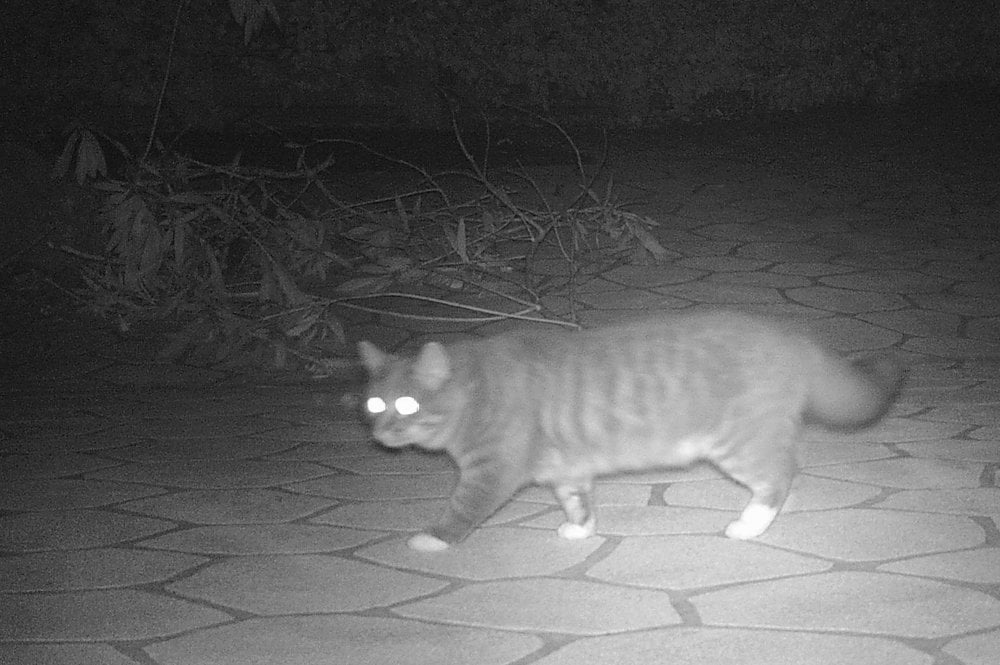
Controlling feral cats is extremely difficult as they occupy such a vast area of NSW and Australia, and are very good at avoiding traps. The 1080 programs targeting dogs and foxes do have some impact on feral cat populations, but the bait products such as dried red meat are not particularly attractive to cats and their preference is for live prey.
Feral cats have been successfully eradicated from some Australian off shore islands and there are a number of large feral-free reserves with predator-proof fencing. NPWS programs are focussed on reducing feral cats in priority areas. Current small scale control methods include trapping, shooting and exclusion fencing while more efficient, humane and target-specific control methods are in development.
The control of pest animals in areas other than National Parks in NSW is the responsibility of Local Land Services (LLS) who have published comprehensive plans for all regions of NSW, including the Hunter Region, that include feral cat management. Regional Strategic Pest Animal Management Plans work to:
- reduce the social, environmental and financial impact of pest animals in NSW
- improve community participation in biosecurity management
- increase numbers of well-trained and resourced landowners
- eliminate or prevent the spread of new invasive species.
The Hunter Regional Strategic Pest Animal Management Plan suggests that landholders undertake activities to reduce the risk of feral cats being introduced and breeding on their land, or being released into the environment. Landholders, including council if it applies to their lands, has a general biosecurity duty to control pest animals on their land. The Regional Plan determines the nature of the duty.
A landholder (which includes local councils) can assist by:
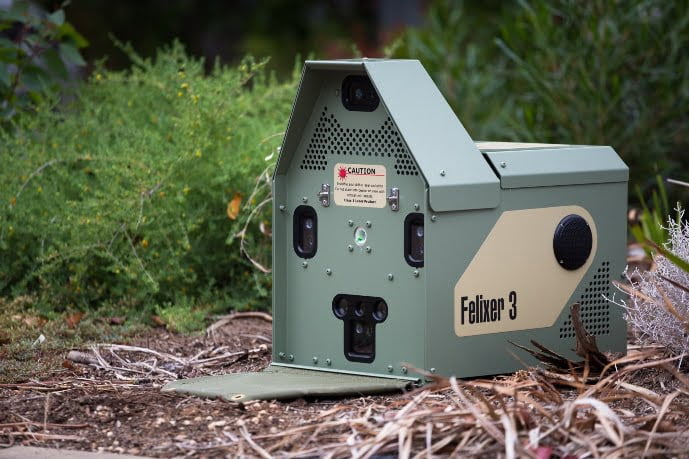
- reporting feral cat sightings to their local LLS Biosecurity Officer
- participating in coordinated pest animal control programs
- inspecting potential breeding sites like rabbit warrens, culverts etc on their land
- keeping pet cats indoors at night.
It is important therefore to ask for assistance from the LLS and the local council should also support their ratepayers in acquiring such assistance when needed.
Landholders must be accredited to use and collect baits to take part in Local Land Services control programs. Free training is now available online for vertebrate pest control and how to carry out an effective baiting program on private properties. The course takes landholders through their legal responsibilities, safety requirements and practical considerations for the effective use of baits and pesticides on feral pests. The course takes roughly two hours to complete, and once finished, a certificate valid for five years will be emailed to participants.
Here is more information on the free Vertebrate Pesticide Induction Training or contact your local Biosecurity Officer.
Review of Regional Strategic Pest Animal Management Plans
You can read the 2018 joint submission from the Invasive Species Council and the Nature Conservation Council of NSW to the 11 draft NSW Regional Strategic Pest Animal Management Plans 2018–23. The summary states:
‘The regional pest plans provide a great opportunity to make a real difference – to prevent new pest species establishing, to stop the spread of harmful species, and to refocus effort on protecting the highest priority species and ecological communities from harm.
The draft plans do not ‘clearly establish expectations’ of land managers and other biosecurity participants, for they are written at too high a level and lack guidance on obligations. Nor are they likely to lead to an overall ‘reduction of pest animal impacts’, for they are mostly bereft of intentions to eradicate or contain pest species and instead rely heavily on the vague concept of ‘asset protection’. They defer specific measures to other plans, most of which are to be still written.’
The submission provides 16 detailed recommendations to strengthen the draft regional pest animal plans. The plans are up for review this year, so keep an eye out for the public consultation period.
Are domestic cats really a problem?
There are approximately 3.8 million domestic cats in Australia and they are present in 27% of households where each registered owner has on average 1.4 cats. However, the number is probably much higher as only around 50% of domestic cats are registered.
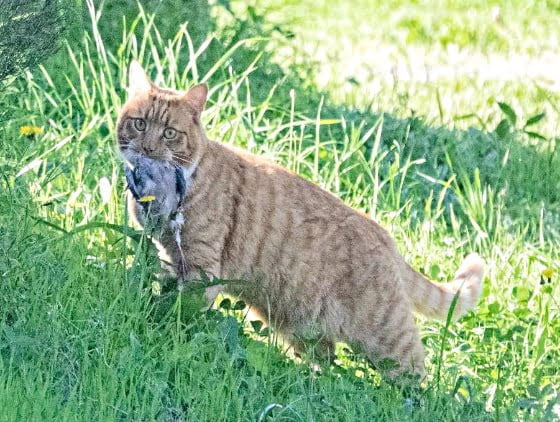
Legge2 states that ‘the per capita kill rate of pet cats is 25% that of feral cats. However, pet cats live at much higher densities, so the predation rate of pets per square kilometre in residential areas is 28–52 times larger than predation rates by feral cats in natural environments, and 1.3–2.3 times greater than predation rates per km2 by feral cats living in urban areas.’ Even if a domestic cat is well fed, it will still kill native animals. This behaviour is instinctive. A night time curfew for domestic cats will prevent predation of most mammals but will not prevent predation of birds and reptiles during the day. Dusk and dawn are the periods when many species are most active (crepuscular) – that would also need to be taken into consideration when imposing curfews.
A third category of cats are the unowned domestic or stray cats. Some of these are fed by homeowners and others scavenge around urban areas. Their life span, however, tends to be short. These cats and other owned cats that are allowed to roam freely, kill an average of 186 reptiles, birds and mammals per year, and by uncontrolled breeding, add to the feral cat population. It is estimated that no more than 30% of domestic cats are kept indoors at all times.
Domestic cats are a major contributor to diseases in humans and are estimated to cost the health system around $8 billion per year. In Australia, there are 550 deaths and 8500 hospitalisations annually, attributed to diseases transmitted from domestic cats. The most dangerous of these is toxoplasmosis which is responsible for 125,000 infections per year. The disease is transmitted via infected cat faeces. It can cause stillbirth or miscarriage in pregnant women and serious health problems in new-born children. People with weakened immune systems are at risk of more severe and debilitating infections. Cat round worm and cat scratch disease can also result in hospitalisations when transmitted to humans.
There is some good news. In June 2022, the NSW Government awarded a $2.5 million grant from the NSW Environmental Trust to RSPCA NSW to deliver the Keeping Cats Safe at Home project. The project will extend over four years and aims to educate cat owners, school children, veterinarians and the public about what it means to be a responsible cat owner. It is hoped the programme will help keep cats safe and healthy and prevent wildlife predation by encouraging pet owners to keep cats within the boundaries of their property. The project will be delivered on a trial basis in partnership with 10 local councils. Unfortunately, Port Stephens Council is not a participant in the project.
How you can help save wildlife
1. With a State election looming, now is a good time to lobby your local member to support the amendment of the NSW Companion Animals Act (1998) to provide local government with the power to:
- enforce registration and micro-chipping of all domestic cats.
- enact and enforce a domestic cat curfew.
Email the following NSW members of parliament:
- Member for Port Stephens, Kate Washington or phone her office on (02) 4987 4455.
- NSW Minister for Local Government, Wendy Tuckerman or phone her office on (02) 4822 6444.
- Shadow Minister for the Environment (Labor), Penny Sharpe or phone her office on 02) 9230 2741.
- The Greens MLC Cate Faerhmann or phone her office on (02) 9230 3771.
2. The highly respected and qualified experts at the Invasive Species Council state that Australia has the worst mammalian extinction record in the world and cats have contributed to two thirds of these species’ demise.
Sign their petition calling on the Australian Government to radically increase investment to effectively control and eradicate harmful invasive animals and protect our vanishing wildlife, and implement the recommendations of the 2020 Parliamentary inquiry.
Add your voice now and help us take 50,000 signatures to Federal Environment Minister Tanya Plibersek. (The petition currently stands at over 37,000 signatures.)
3. Read the Regional Strategic Pest Animal Management Plan for the Hunter and see what you can undertake on your property. Our Local Land Services have excellent resources and helpful staff. Contact your local Biosecurity Officer at Hunter Local Land Services, who can offer locally specific information and options available to you. Jim Kerr is the Team Leader for Animal Biosecurity and Welfare and can be contacted on (02) 4939 8966 or by email.
4. There is a free app you can download to your mobile phone to report feral cat sightings.
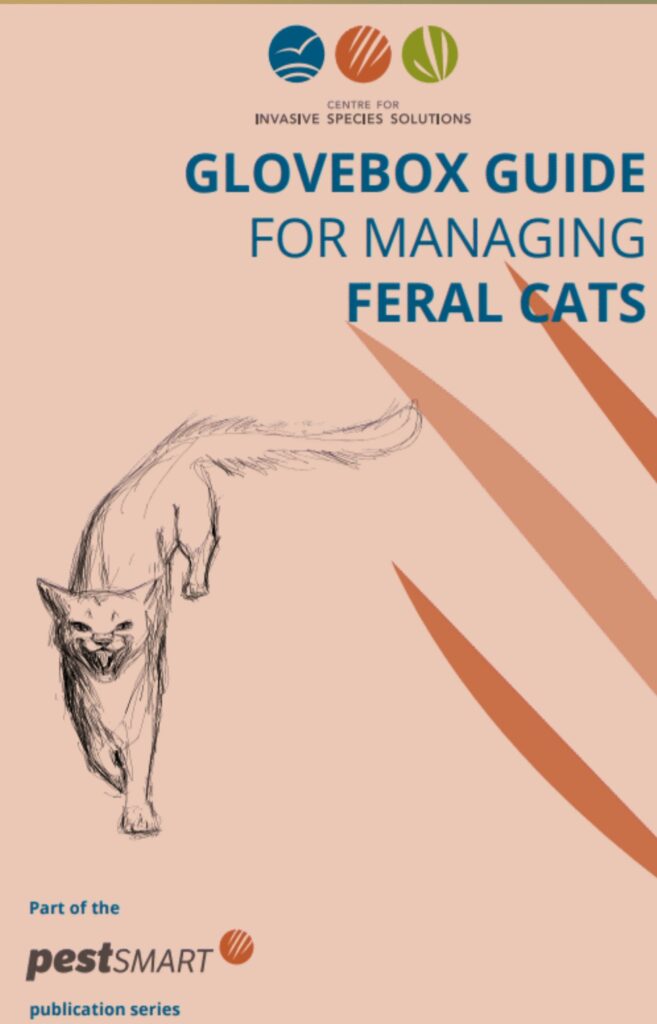
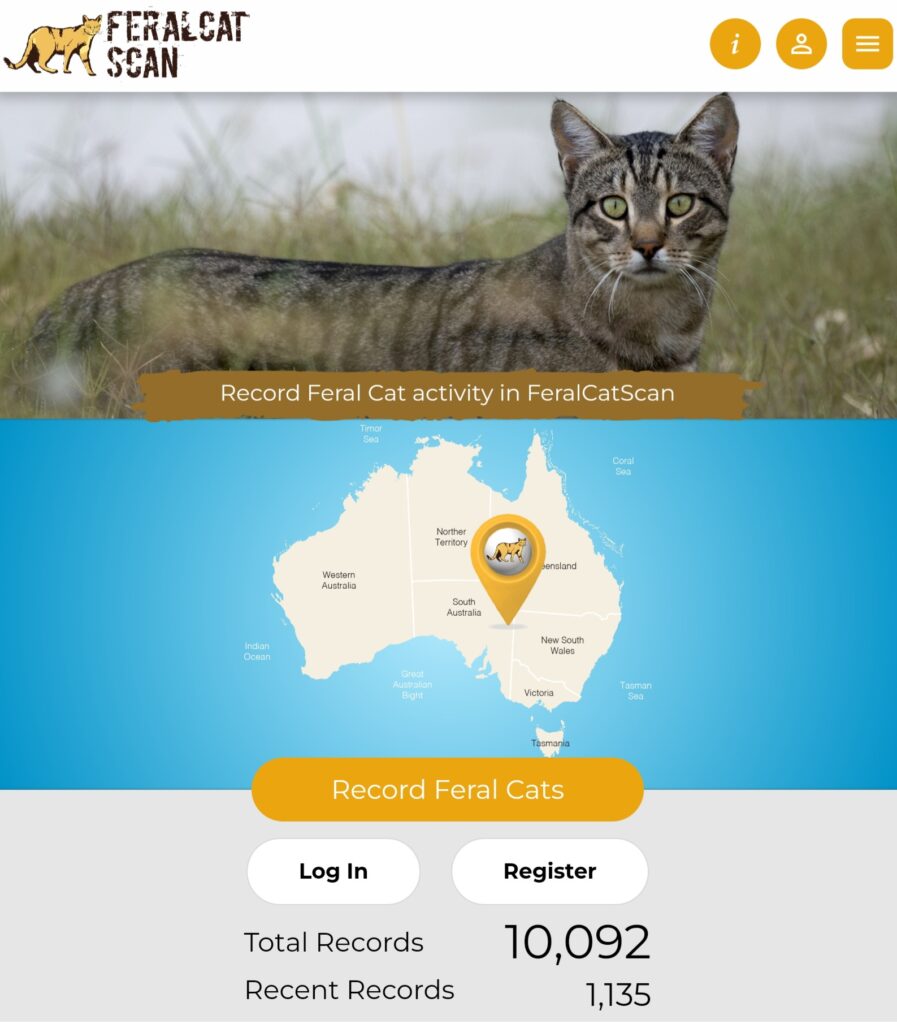
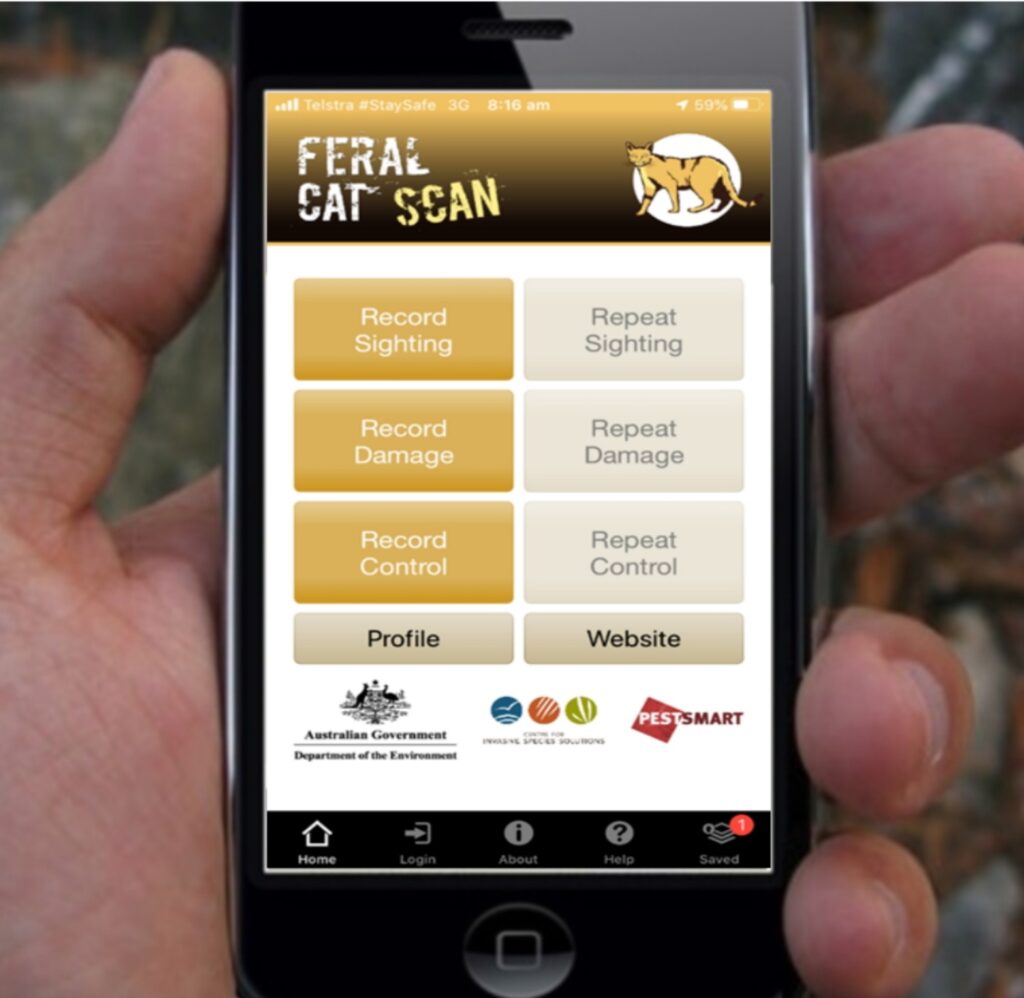
5. If you are a cat owner, ensure your pet is desexed, micro-chipped, registered and kept indoors at all times. If you choose to confine your cat in your backyard, you can install a confined cat run or install a cat proof fence, 1.8 m high topped with an ‘Oscillot’ barrier. However, do not expect to see native wildlife in your backyard. Providing your cat with a brightly coloured bib when outside will protect most birds from predation, but it is less effective against mammals and reptiles. Never leave pet food outside.
6. A number of communities around Australia, with support from local and state governments, have introduced feral animal control programmes. In Sherbrooke Forest, Yarra Ranges, Victoria, local shires have by-laws to prevent predation on lyrebirds including a cat curfew and other measures requiring ratepayers to properly control pets. The City of Marion Council in South Australia has introduced by-laws that prevent cats let outdoors at night.
These are measures that could be introduced in Port Stephens if our community can work together with legislators on this important issue. Contact your local councillor and let them know that the cat problem is one we all need to work on together if we are to save biodiversity in our beautiful natural areas such as Mambo Wetlands in Port Stephens.
References and further reading:
- 1Stobo-Wilson et al. (2022). Counting the bodies: Estimating the numbers and spatial variation of Australian reptiles, birds and mammals killed by two invasive mesopredators. Diversity and Distributions 28: 976-991.
- 2Legge, S. et al. (2020). We need to worry about Bella and Charlie: the impacts of pet cats on Australian wildlife. Wildlife Research 47: p523-539.
- ACT-wide containment for cats born from 1 July 2022
- The impact of cats in Australia – Threatened Species Recovery Hub: Science for Saving Species.
- Impact of pet cats on Australian wildlife – Invasive Species Council
- Cats in Australia – Invasive Species Council
- The Impact of feral cats in Australia – PestSmart, powered by the Centre for Invasive Species Solutions
- Feral Cat Scan – NSW Department of Primary Industries / Centre for Invasive Species Solutions
- ‘Among the Pigeons: Why our cats belong indoors‘ by John L. Read, published 2019 by Wakefield Press.
Other useful links:
- Local Land Service Pest Animal Management
- Local Land Services feral cat control information
- NSW Government Environment Department – feral cats
- Threat abatement plan for predation by feral cats (2015) – Australian Government
- Sherbrooke Lyrebird Study Group
In the Media:
- Councils push for stronger laws to keep cats inside – ABC 16 February 2023
- NSW council calls for statewide pet cat curfew and power to enforce containment – ABC 26 July 2022
- Feral pest inquiry response shuts down cat curfew but urges owners to keep pets contained – ABC 8 March 2022
- Why pet owners keep their cats indoors and it’s not to protect wildlife – The Conversation September 2021
- Native animal annihilators – ABC video
- One cat, one year, 110 native animals: Lock up your pet, it’s a killing machine – Threatened Species Recovery Hub 28 Oct 2020
- Don’t let them out: 15 ways to keep your indoor cat happy – The Conversation May 2020

